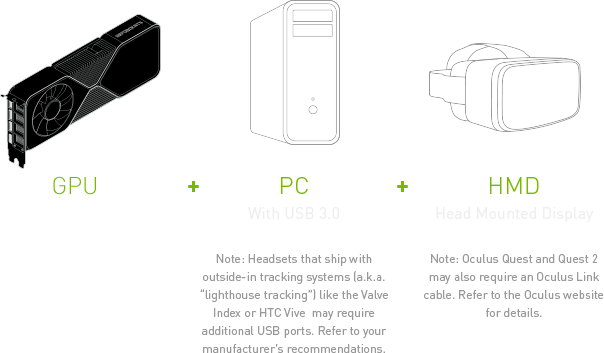Thực tế ảo mang lại những trải nghiệm sống động nhất khi chơi game trên PC. Nhưng thật khó để hiểu đúng về VR. Với độ phân giải hiển thị hiệu quả ở 4K và ngày càng tăng, tốc độ làm mới tối thiểu 90 Hz và dung sai có độ trễ cực thấp, VR là một trong những ứng dụng PC đòi hỏi khắt khe nhất thế giới và yêu cầu GPU mạnh nhất thế giới.
GPU GeForce RTX™ từ NVIDIA mang đến hiệu suất để chơi các tựa game hàng đầu trên kính VR mới nhất. Thêm vào đó, các GPU này tích hợp với công nghệ để giúp bạn thỏa sức tinh chỉnh cài đặt cho tương tác game ấn tượng, chìm đắm.



































































